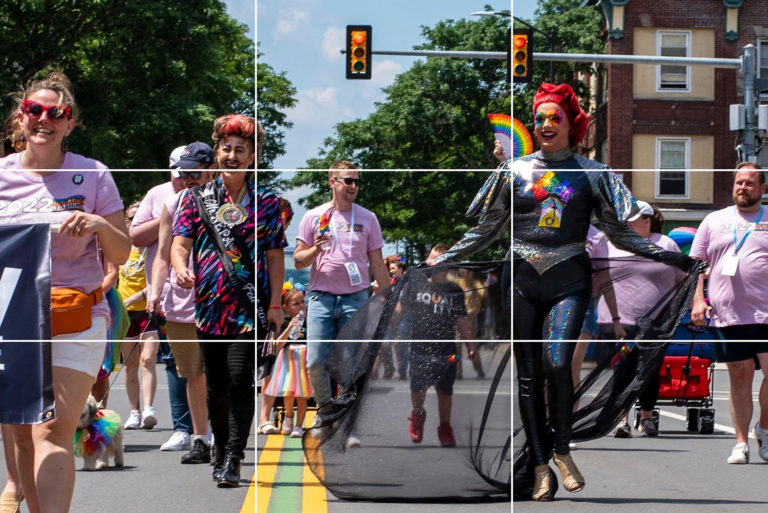When our collaborators ask for help improving their social media presence, we often focus on image quality and taking their photos, videos and graphics to the next level.
Not to knock anyone, but just about everyone could use a little help making their images and videos better.
Here’s the best part: it doesn’t take much to level up. We’ve got three quick and dirty tips to make your images better.
Why strong photography matters
Even though this part’s pretty simple, we often see brands using lousy images to promote their brands.
While consumers have gotten really used to candid photos and videos obviously shot with a smartphone, there’s a limit to how sloppy you can get.
“The photos you post could very well be a potential customer’s first interaction with your brand,” said Jon O’Connell, Coal Creative’s Director of Strategic Communications. “Make sure they shine and represent you appropriately.”

Lastly, market research shows consumers make buying decisions based on image quality.
1. Fix your composition with focus, exposure and rule of thirds
OK, OK. This feels like three tips in one. For the sake of keeping this to three tidy tips, let’s consolidate these rules into one set of best practices and call it “composition.”
CNET has some great resources for iPhone and Android users depending on how deep you want to get into this.
Focus is what it sounds like. It’s how clear the person or thing — your subject — appears in the image. You can select your focus by tapping on your photo subject on just about every smartphone camera.
Some cameras have selective focus, usually called portrait mode, which shortens the depth of field, or that area in focus.
Pro Tip: Be careful with these settings, especially outdoors. At the risk of getting too technical, smartphone cameras create an artificial shallow depth of field, which can leave an unpleasant edge effect around the subject in your photo. Sometimes, these aren’t noticeable, but it’s worth keeping an eye out for them.
Exposure basically means the amount of light your camera shutter lets in to create an image. Too much exposure will make your image look washed out. Too little, as you can imagine, makes it darker.
Just like focus, you can adjust exposure for the thing you’re photographing by tapping the subject on the screen.
If you’re in a low-light situation, smartphones these days are pretty amazing at adjusting automatically by slowing the shutter speed to let in more light. Keep in mind you might have to hold your phone still for a few seconds until the shutter closes.
The last rule for composition, the almighty rule of thirds. This has to do with where you position your subject in the frame of the photo.
“There’s nothing inherently wrong with sticking your subject smack in the middle of the frame, but using the rule of thirds almost always makes the image look more interesting,” Jon said.
To prove his point, smartphone cameras put a grid, breaking up the frame into three horizontal and three vertical slices, right into the default camera settings. They make it a snap to put the rule of thirds to work in all of your images.
Jon pointed to some photos Coal Creative recently posted to its social accounts from the recent Pride parade in Downtown Wilkes-Barre.
The action shot shows Drag Queen Trixie Valentine’s face in the upper right corner with a great smile looking inward. It’s a really strong image with great expressions, color, light and framing.

2. Be your own photo gatekeeper
The next two tips are far less technical (phew!) and boil down to your mindset for generating new content.
You own your social media channels. You get to decide what images go in the trash and which ones get blasted out to your audience, so set a high standard for yourself.
People on the internet are unbelievably critical, whether they speak up or not. And whether they notice they’re doing it or not, they make micro judgments about your brand based on the content you post.
If they see consistently poor images, they associate your brand with poor quality.
Don’t give anybody that option. Make sure only quality images hit your page.
3. Post often and stay curious
Feeling a little intimidated? Jon has some encouragement there.
“Thankfully, the internet has a long memory, but a short attention span,” he said.
That gives you the freedom and confidence to experiment with the photos and videos you post. Take time when you have it, and look for interesting opportunities to share with your audience.
You probably won’t go viral overnight, but you will get a better sense of what images get more engagement versus others. After a little time, you’ll get more comfortable putting your brand out there and feel confident about posting photos.
Give us a shout if you want to talk with the Coal Creative social media experts or work with our team to improve your image online. Use the form below to get in touch. Don’t forget to stay Coal!

Leave a Reply